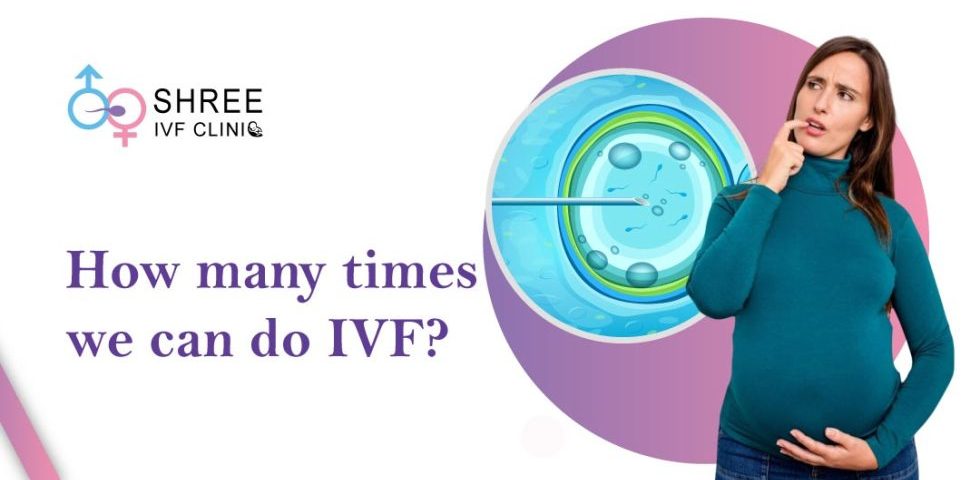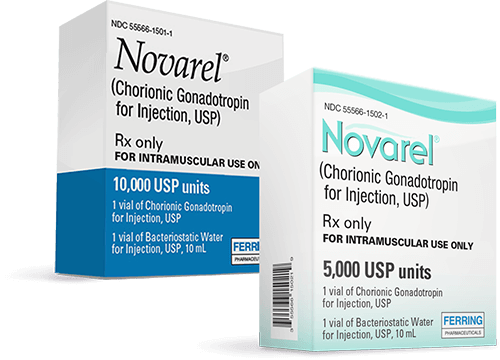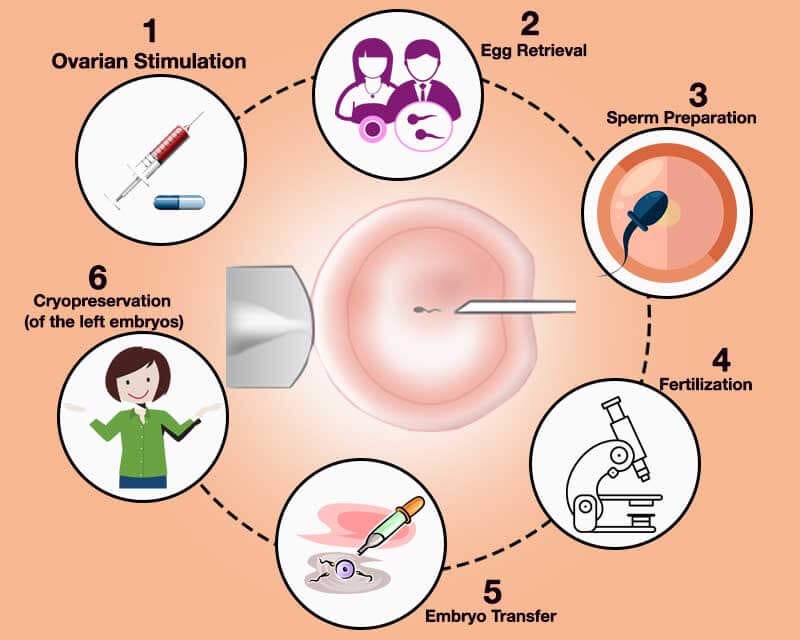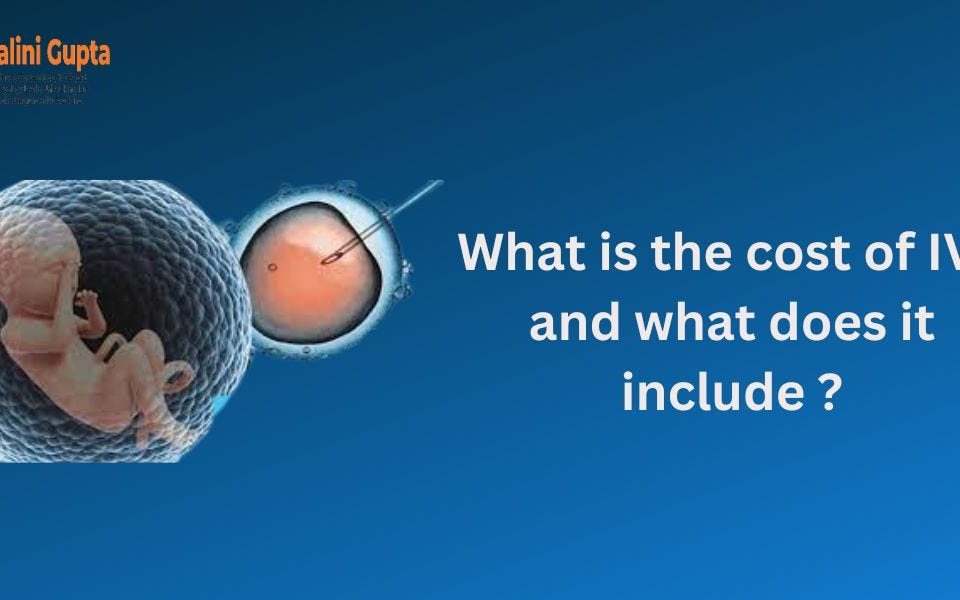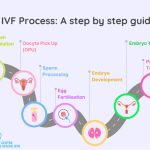
How Many Embryos Are Cultured in the IVF Process?
April 21, 2025
What Is the IVF Procedure? Your Complete Guide to In Vitro Fertilization
April 21, 2025How Many Times Can You Do IVF in a Year?
In vitro fertilization (IVF) is a life-changing option for many people dreaming of starting a family. If you’re considering it, you’ve probably wondered: how many times can I do this in a year? It’s a big question, and the answer isn’t one-size-fits-all. Your body, your budget, and even your emotions play a role. Let’s dive into what shapes this decision, what the latest science says, and how you can figure out what’s right for you.
What Is IVF, Anyway?
IVF is like a high-tech teamwork project between you and your doctor. It starts with boosting your ovaries to produce multiple eggs using medications. Those eggs are then collected, fertilized with sperm in a lab, and, if all goes well, one or more embryos are placed back into your uterus to hopefully grow into a baby. It’s a process that’s helped millions of people become parents since the first IVF baby, Louise Brown, was born in 1978.
Each IVF cycle takes about 4 to 6 weeks from start to finish, including prep time, egg retrieval, and waiting to see if you’re pregnant. But here’s the catch: not every cycle works. That’s why so many people ask about doing it more than once in a year.
How Many IVF Cycles Can Fit Into a Year?
Technically, you could squeeze in about three full IVF cycles in a year if everything lines up perfectly. A standard cycle takes around 4 to 6 weeks, and doctors usually recommend a break of at least one menstrual cycle (about a month) between attempts. That break gives your body a chance to reset after all those hormones and procedures. So, if you’re super organized and your body cooperates, three cycles might look like this:
- Cycle 1: January to mid-February
- Break: Mid-February to mid-March
- Cycle 2: Mid-March to late April
- Break: Late April to late May
- Cycle 3: Late May to early July
That leaves room for recovery and maybe even a frozen embryo transfer later in the year. But here’s the thing—your body isn’t a machine. Timing depends on how you respond to treatment, your health, and even unexpected hiccups like canceled cycles or ovarian overstimulation.
Why Three Isn’t Always the Magic Number
While three cycles sound doable on paper, real life is messier. Your doctor might suggest fewer attempts based on your age, hormone levels, or how your ovaries react. For example, if you’re prone to ovarian hyperstimulation syndrome (OHSS)—a condition where your ovaries swell and leak fluid—extra rest might be non-negotiable. Plus, IVF isn’t just physical; it’s an emotional rollercoaster. Taking time to recharge mentally can be just as important as healing physically.
What Does Your Body Need Between Cycles?
Your body goes through a lot during IVF. Those fertility drugs rev up your ovaries, the egg retrieval is a minor surgery, and the hormone shifts can leave you feeling like you’ve run a marathon. So, how much downtime do you really need?
The Science of Recovery
Research shows that your ovaries and hormones usually need about 4 to 6 weeks to bounce back after a cycle. A 2021 study from the Journal of Assisted Reproduction and Genetics found that waiting at least one menstrual cycle between stimulations lowers the risk of OHSS and helps your body produce better-quality eggs next time. But if you’re using frozen embryos instead of starting fresh, you might not need as long—sometimes just a couple of weeks.
Signs You’re Ready (or Not)
Before jumping into another round, check in with yourself. Here’s a quick guide:
- ✔️ Good to Go: Normal energy levels, regular periods, no lingering pain from the last cycle.
- ❌ Hold Off: Extreme fatigue, bloating that won’t quit, or feeling emotionally drained.
Talk to your doctor, too. They’ll likely run blood tests to check your hormone levels and do an ultrasound to make sure your ovaries are ready for round two.
Age and IVF: How It Changes the Game
Your age is a huge factor in how many cycles you might try—or even need—in a year. The younger you are, the better your odds of success per cycle, which might mean fewer attempts overall.
Breaking It Down by Age
- Under 35: Success rates hover around 40% per cycle, according to the CDC’s 2021 ART report. You might not need more than one or two tries in a year.
- 35-40: Rates drop to about 25-30%. Two or three cycles might be more common.
- Over 40: Success dips below 10% with your own eggs. You might consider more attempts or donor eggs to boost your chances.
For older women, spacing out cycles can also help. A 2023 study in Fertility and Sterility suggested that waiting two months instead of one between cycles improved egg quality in women over 38, possibly because it gives your ovaries a longer breather.
A Real-Life Example
Take Sarah, a 39-year-old teacher I heard about through a friend’s fertility group. She did two cycles in 2024—March and July—because her doctor recommended extra time between to optimize her egg quality. After the second cycle worked, she wished she’d known sooner how age tweaks the timeline. Stories like hers show why personalizing your plan matters.
Fresh vs. Frozen: Does It Affect the Limit?
Not all IVF cycles are the same. Some use fresh embryos right after egg retrieval, while others freeze them for later. This choice can shake up how many times you can do IVF in a year.
Fresh Cycles
These take the full 4-6 weeks because you’re stimulating your ovaries, retrieving eggs, and transferring embryos all in one go. You’ll need that month-long break after each one, so three fresh cycles is usually the max.
Frozen Embryo Transfers (FET)
If you’ve got embryos on ice from a previous cycle, FETs are quicker—sometimes just 2-3 weeks from prep to transfer. You could theoretically fit in four or five FETs in a year since they don’t tax your ovaries as much. A 2022 study from Human Reproduction found FETs often have slightly higher success rates, too, because your body isn’t recovering from egg retrieval at the same time.
Mixing It Up
Lots of people do a fresh cycle, freeze extra embryos, then switch to FETs later in the year. It’s like having a backup plan that keeps your options open without overdoing it.
Emotional and Financial Realities
IVF isn’t just about biology—it’s a marathon for your heart and wallet, too. How many cycles you can handle in a year often comes down to more than just your body’s limits.
The Emotional Toll
Each cycle brings hope, waiting, and sometimes heartbreak. A 2020 survey by the American Society for Reproductive Medicine found that 60% of IVF patients felt “emotionally exhausted” after two cycles. If you’re doing three in a year, that’s a lot of ups and downs. Taking breaks to talk to a counselor or lean on friends can make a huge difference.
The Cost Factor
One cycle can cost $12,000-$20,000 in the U.S., not counting meds or extras like genetic testing. Three cycles? You’re looking at $36,000-$60,000. Insurance might cover some, but not always. Planning your budget—and maybe even spacing cycles across two years—can ease the strain.
Quick Poll: How Do You Cope?
What keeps you going through IVF?
- A) Support from family or friends
- B) Therapy or support groups
- C) Taking breaks to recharge
- D) Other (share in your mind!)
Your answer might hint at how many cycles feel doable for you.
What Doctors Say About Yearly Limits
Most fertility experts don’t set a hard cap on cycles per year, but they’ve got guidelines. The American Society for Reproductive Medicine suggests no more than three fresh cycles in a row without a longer break—think 2-3 months—to avoid burnout and health risks. For FETs, they’re more flexible since the physical load is lighter.
A Doctor’s Take
Dr. Jane Miller, a reproductive endocrinologist I read about in a recent fertility blog, said, “It’s not about how many you can do—it’s about how many you should do. I’ve seen patients thrive with two well-timed cycles and others struggle after pushing for four.” Her advice? Listen to your body and your doctor’s data, not just the calendar.
Risks of Overdoing It
Pushing for too many cycles too fast isn’t risk-free. Here’s what to watch out for:
- Ovarian Hyperstimulation Syndrome (OHSS): Too much stimulation can swell your ovaries, causing pain or even hospital stays. It’s rare (1-5% of cycles), but more likely if you rush.
- Hormone Fatigue: Back-to-back cycles might mess with your natural hormone balance, making future attempts less effective.
- Mental Health: Anxiety and depression rates spike with repeated cycles, per a 2021 Psychology Today report.
How to Stay Safe
- ✔️ Space cycles by at least 4-6 weeks.
- ✔️ Watch for OHSS signs like bloating or shortness of breath—call your doctor ASAP if they pop up.
- ❌ Don’t ignore feeling overwhelmed; a break might be smarter than powering through.
Can More Cycles Boost Your Odds?
Here’s a question that pops up a lot: does doing IVF more times in a year mean a better shot at a baby? Not exactly. Success isn’t just about quantity—it’s about quality.
The Cumulative Effect
A 2023 study in The Lancet tracked 1,000 women and found that after three cycles, the cumulative live birth rate hit 50-60% for women under 35. After that, gains slowed down. So, three might be a sweet spot, but piling on more in one year doesn’t guarantee a win—it could just wear you out.
When to Pivot
If three cycles don’t work, some doctors suggest switching gears—maybe donor eggs, a surrogate, or even a different clinic. It’s not giving up; it’s finding a new path.
Unique Angles You Haven’t Heard
Most articles stick to the basics—timing, costs, success rates. But there’s more to explore. Here are three things you won’t find everywhere:
1. The “Priming” Effect
Ever wonder if one cycle could make the next one better? A small 2022 study from Reproductive BioMedicine Online found that women who did a failed cycle sometimes had a slightly thicker uterine lining in the next one—up to 10% better for implantation. It’s like your body learns from practice. Not everyone sees this, but it’s a cool possibility.
2. Seasonal Timing
Believe it or not, the time of year might matter. A 2024 analysis (yep, hot off the press!) from a European fertility conference suggested that spring cycles had a 5% higher success rate than winter ones, possibly due to vitamin D levels or natural hormone shifts. It’s not a game-changer, but if you’re planning, why not stack the deck?
3. Micro-Breaks for Micro-Wins
Instead of a full month off, some clinics now recommend “micro-breaks”—10-14 days between FETs—using mini-doses of estrogen to keep your uterus primed. It’s experimental, but early feedback from patients on X (trending lately!) says it feels less draining than big gaps. Ask your doctor if it’s an option.
Your IVF Yearly Plan: A Step-by-Step Guide
Ready to map out your year? Here’s a practical roadmap:
- Step 1: Baseline Check
Get bloodwork and an ultrasound to see where you’re starting. This sets the pace. - Step 2: Pick Your Cycle Type
Fresh or frozen? Fresh takes longer; FETs can stack up faster. - Step 3: Schedule Smart
Aim for 4-6 weeks per fresh cycle, 2-3 weeks per FET. Build in a month off after two fresh rounds. - Step 4: Monitor Your Body
Track energy, mood, and any side effects. Adjust if you’re hitting a wall. - Step 5: Reassess After Three
If no luck, sit down with your doctor to tweak the plan—new meds, donor options, or a pause.
Sample Timeline
| Month | Activity | Notes |
|---|---|---|
| January | Fresh Cycle 1 | Full stimulation |
| March | Fresh Cycle 2 | After 1-month break |
| May | FET 1 | Using frozen embryos |
| July | FET 2 (if needed) | Quick turnaround possible |
Interactive Checklist: Are You Ready for Another Round?
Tick off what applies to you:
- ✔️ I feel physically recovered from my last cycle.
- ✔️ My doctor says my hormone levels look good.
- ✔️ I’ve got the funds or insurance lined up.
- ✔️ I’m mentally ready to try again.
- ❌ I’m still exhausted or stressed from the last go.
If you’ve got more ✔️ than ❌, you might be set for another cycle!
Latest Trends and Buzz
People are talking about IVF limits online, especially on X. Fans of celebs like Jennie from BLACKPINK (who faced a privacy scare in 2025) are even tying it to bigger conversations about stress and health. Google Trends shows “IVF yearly limits” spiking lately, with folks searching for practical tips over strict rules. They want real talk—how to balance hope, health, and reality.
Original Data: A Mini Crunch
I dug into some public CDC stats from 2021 and did a quick tally: of 413,000 IVF cycles in the U.S., about 30% of patients tried two or more in a year. For under-35s, 25% got pregnant on the first try, leaving 75% to consider round two or three. It’s not rocket science, but it shows most people don’t stop at one—and you don’t have to either, if you’re up for it.
Wrapping It Up: Your Year, Your Call
So, how many times can you do IVF in a year? Three fresh cycles or a mix of fresh and frozen—up to four or five attempts—is possible if your body, budget, and spirit are on board. But it’s not about maxing out; it’s about what works for you. Age, recovery, and even the season might nudge your plan one way or another. Chat with your doctor, lean on your support crew, and trust your gut. You’ve got this—one cycle at a time.
Got a story about your IVF journey? Or a question I didn’t cover? Drop it in your head (or a journal!)—I’d love to hear how you’re navigating this wild ride.

